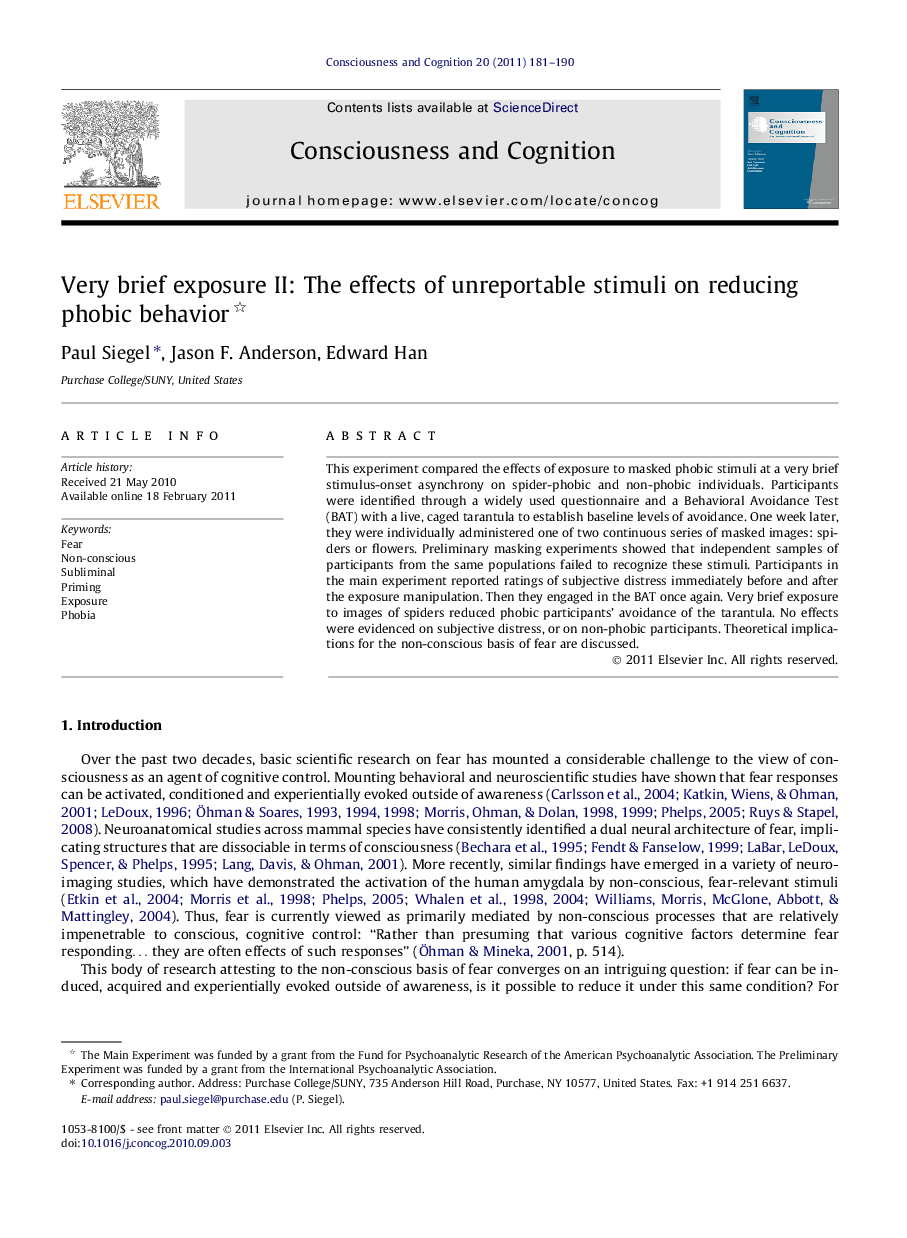| Article ID | Journal | Published Year | Pages | File Type |
|---|---|---|---|---|
| 927693 | Consciousness and Cognition | 2011 | 10 Pages |
This experiment compared the effects of exposure to masked phobic stimuli at a very brief stimulus-onset asynchrony on spider-phobic and non-phobic individuals. Participants were identified through a widely used questionnaire and a Behavioral Avoidance Test (BAT) with a live, caged tarantula to establish baseline levels of avoidance. One week later, they were individually administered one of two continuous series of masked images: spiders or flowers. Preliminary masking experiments showed that independent samples of participants from the same populations failed to recognize these stimuli. Participants in the main experiment reported ratings of subjective distress immediately before and after the exposure manipulation. Then they engaged in the BAT once again. Very brief exposure to images of spiders reduced phobic participants’ avoidance of the tarantula. No effects were evidenced on subjective distress, or on non-phobic participants. Theoretical implications for the non-conscious basis of fear are discussed.
